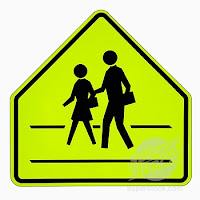
“I never thought I would pursue a career in writing when I was in college,” Ms. Webber explained the opening of the discussion. While she concentrated her studies on Business Administration, she loved writing for the daily college newspaper at Saint Mary’s College in Notre Dame, Indiana. She decided to be a journalist after working as a fashion assistant with designer, Michael Kors. She was first inspired by editors in the fashion world and as receiving an M.A. in Journalism in 1994 at New York University, she began work as a copywriter at Self magazine. Soon after, she started writing articles for W magazine and became a freelance lifestyle writer in 1998 – writing stories about the way we live, including health, house design, wedding, and dieting. According to her web site, she has contributed to Martha Stewart Weddings, Women’s Health, InStyle, Harper’s Bazaar, Country Home and W, and the internet for MSN/AOL and ivillage. She has also written on Philadelphia Magazine’s Home & Garden, The Philadelphia Inquirer, and New Jersey Life. Outside of her career as a professional journalist, Ms. Webber teaches journalism at Temple University and the College of New Jersey, and has also published a coffee table book, Spectacular Homes of Greater Philadelphia in 2006.
Ursinus English professor Dr. Erec Smith met with Ms. Webber this summer at the Philly Spells Writing Center and together they collaborated with the Center on strategies for writing education which eventually led to Ms. Webber’s invitation to visit the Ursinus campus.
Ms. Webber asks students to always keep in mind that journalists should be deeply aware of the scenes they wish to report, and be the eyes and ears for readers. She emphasized the importance that to write an article, a journalist must gain information through reading and listening to people’s stories, research backgrounds, and then ask themselves what the reader wants to hear. Ms. Webber always carries around a dollar marble notebook in which even the littlest story finds constant attention and revision. Yet, she said, “The hard parts still for me is taking all these notes and sitting down in front of the blank computer screen” where she knows that, no matter what, she has to produce something of value.
A freshman, Joshua Walsh, commented after the lecture through an e-mail, “I was surprised to learn how much the journalism process involved marketing.” Ms. Webber pointed out the strong relationship between the newspaper and magazine industry and the current economic climate. The influence of the recent economic downfall and the growing trend of online media have had a negative effect on the news industry. Ms. Webber referred specifically to Domino magazine, which she had subscribed to and which folded in January. The spokeswoman of Domino, Maurie Perl, talked to The New York Times on Jan. 28 that “The economy just drove the decision to discontinue the publication.” Eventually, Domino changed their field from paper to online and became Lonny magazine. Reflecting on this fact, Ms. Webber said, “I think the wave of the future is definitely new media.” It is important for all future journalists to learn about new media and keep up on the trend. At the same time, Ms. Webber reminded students about the importance of studying: “Learn your craft, don’t take any shortcuts on learning to be a good writer.”
Back to The Grizzly Online





